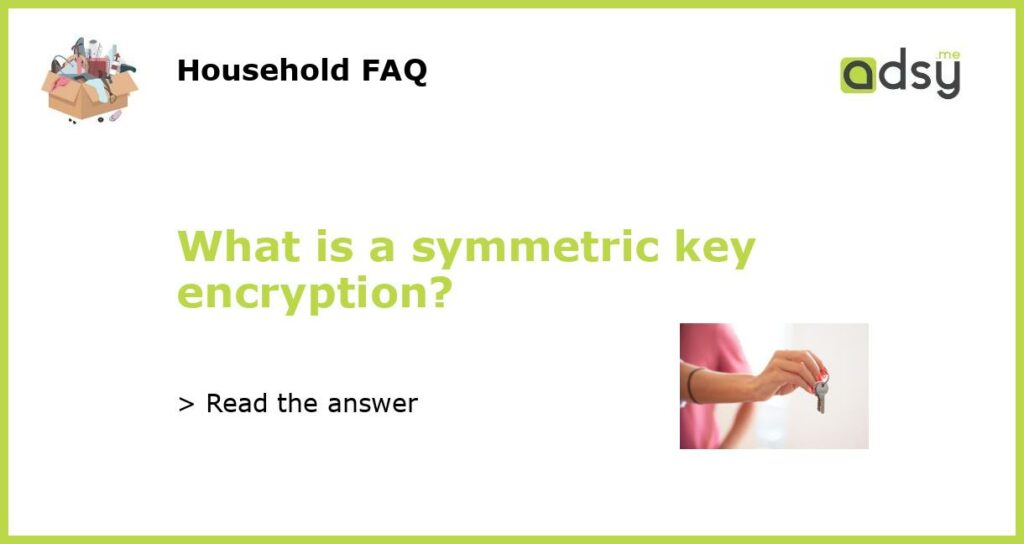A symmetric key encryption is a type of encryption algorithm that uses the same key for both encryption and decryption.
Symmetric key encryption, also known as secret key encryption or conventional encryption, is a technique where the same key is used for both the encryption and decryption processes. This means that the sender and the receiver need to have the same key in order to communicate securely.
How does symmetric key encryption work?
In symmetric key encryption, the plaintext (the original data) is encoded into ciphertext (the encrypted data) using a secret key. The key is then used by both the sender and the receiver to encrypt and decrypt the message.
The process of symmetric key encryption involves applying an algorithm to the plaintext and the secret key to generate the ciphertext. This ciphertext can then be transmitted or stored securely without the fear of it being intercepted or accessed by unauthorized individuals.
Advantages of symmetric key encryption
There are several advantages to using symmetric key encryption:
- Security: Symmetric key encryption provides a high level of security for transmitting sensitive information. The shared key ensures that only authorized parties can access and decrypt the data.
- Speed: Symmetric key algorithms are generally faster than their asymmetric key counterparts. This is because the same key is used for both encryption and decryption, which simplifies the process and reduces processing time.
- Efficiency: Symmetric key encryption is more efficient in terms of computational resources as compared to asymmetric key encryption. This makes it a preferred choice for scenarios where speed and efficiency are important.
- Compatibility: Symmetric key encryption algorithms are widely supported and compatible with various systems and devices, making it easier to implement and use.
- Scalability: Symmetric key encryption can easily scale to accommodate large volumes of data, making it suitable for applications that deal with massive amounts of information.
Examples of symmetric key encryption algorithms
There are several commonly used symmetric key encryption algorithms, including:
- Advanced Encryption Standard (AES): AES is one of the most widely used symmetric key encryption algorithms. It is a block cipher that can operate on 128, 192, and 256-bit keys.
- Triple Data Encryption Standard (3DES): 3DES is an encryption algorithm based on the original Data Encryption Standard (DES). It uses three rounds of encryption for enhanced security.
- Blowfish: Blowfish is a symmetric key block cipher that operates on 64-bit blocks of data. It supports key sizes ranging from 32 to 448 bits.
- RC4: RC4 is a stream cipher that is widely used in secure communication protocols such as SSL and WEP. It operates on variable length keys and is known for its simplicity and speed.
Symmetric key encryption is a widely adopted technique for securing sensitive data. It provides a high level of security, speed, efficiency, compatibility, and scalability, making it suitable for a wide range of applications. By using a common secret key for both encryption and decryption, symmetric key encryption ensures that only authorized parties can access and decrypt the data.






